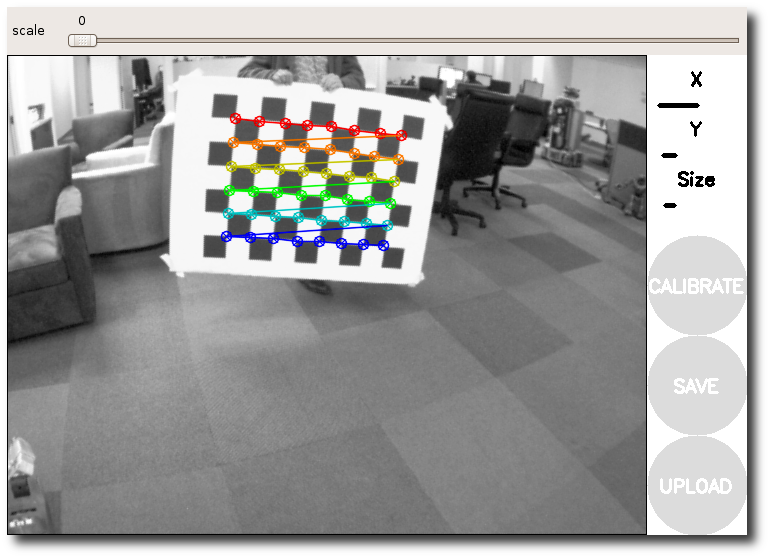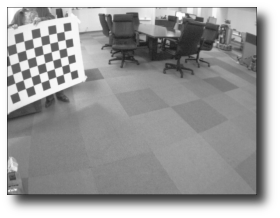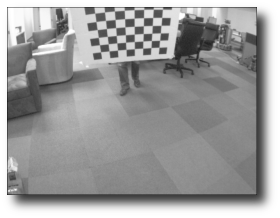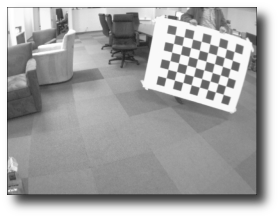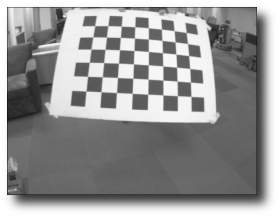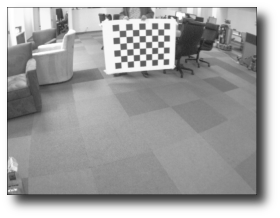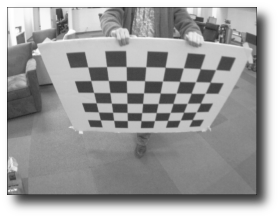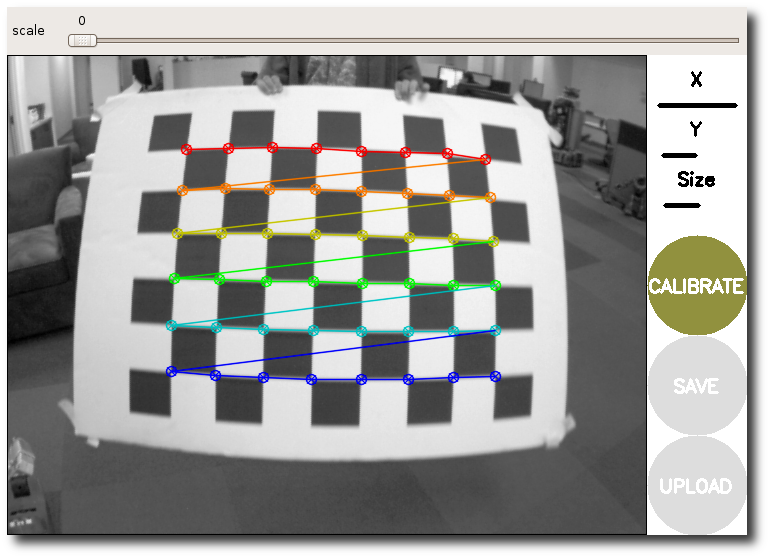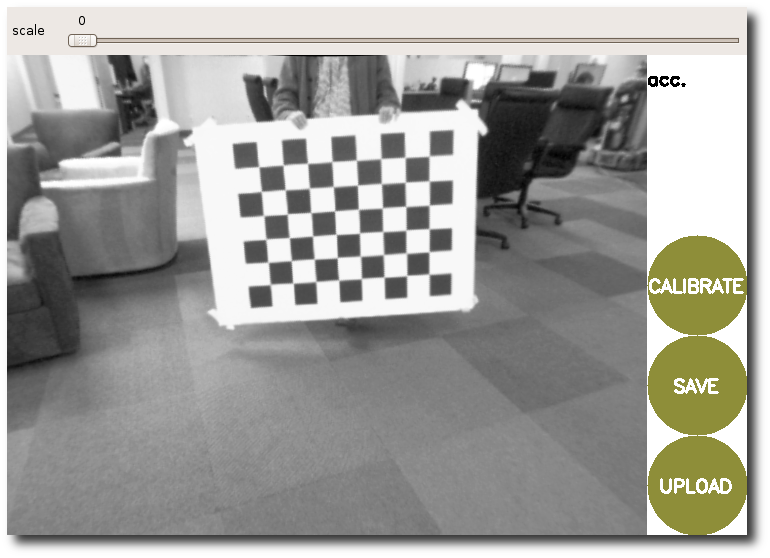| Note: This tutorial assumes that you have completed the previous tutorials: ROS Tutorials. |
| |
How to Calibrate a Monocular Camera
Description: This tutorial cover using the camera_calibration's cameracalibrator.py node to calibrate a monocular camera with a raw image over ROS.Keywords: monocular, camera, calibrate
Tutorial Level: BEGINNER
Contents
Before Starting
Make sure that you have the following:
a large checkerboard with known dimensions. This tutorial uses a 8x6 checkerboard with 108mm squares. Calibration uses the interior vertex points of the checkerboard, so an "9x7" board uses the interior vertex parameter "8x6" as in the example below.
- a well lit 5m x 5m area clear of obstructions and check board patterns
- a monocular camera publishing images over ROS
Compiling
Start by getting the dependencies and compiling the driver.
$ rosdep install camera_calibration
Make sure that your monocular camera is publishing images over ROS. Let's list the topics to check that the images are published:
$ rostopic list
This will show you all the topics published, check to see that there is an image_raw topic. The default topics provided by most ROS camera drivers are:
/camera/camera_info /camera/image_raw
If you have multiple cameras or are running the driver in its own namespace, your topic names may differ.
Running the Calibration Node
To start the calibration you will need to load the image topics that will be calibrated:
$ rosrun camera_calibration cameracalibrator.py --size 8x6 --square 0.108 image:=/camera/image_raw camera:=/camera
This will open up the calibration window which will highlight the checkerboard:
If it does not open up the window try the following parameter:
--no-service-check
If you can't see any colored dots make sure you count the interior vertex points, not the squares!
Dual Checkerboards
New in D
Starting in Diamondback, you will be able to use multiple size checkerboards to calibrate a camera.
To use multiple checkerboards, give multiple --size and --square options for additional boards. Make sure the boards have different dimensions, so the calibration system can tell them apart.
Moving the Checkerboard
In order to get a good calibration you will need to move the checkerboard around in the camera frame such that:
- checkerboard on the camera's left, right, top and bottom of field of view
- X bar - left/right in field of view
- Y bar - top/bottom in field of view
- Size bar - toward/away and tilt from the camera
- checkerboard filling the whole field of view
- checkerboard tilted to the left, right, top and bottom (Skew)
At each step, hold the checkerboard still until the image is highlighted in the calibration window.
|
|
|
|
|
|
As you move the checkerboard around you will see three bars on the calibration sidebar increase in length. When the CALIBRATE button lights, you have enough data for calibration and can click CALIBRATE to see the results.
Calibration can take about a minute. The windows might be greyed out but just wait, it is working.
Calibration Results
After the calibration is complete you will see the calibration results in the terminal and the calibrated image in the calibration window:
A successful calibration will result in real-world straight edges appearing straight in the corrected image.
A failed calibration usually results in blank or unrecognizable images, or images that do not preserve straight edges.
After a successful calibration, you can use the slider at the top of the calibration window to change the size of the rectified image. A scale of 0.0 means that the image is sized so that all pixels in the rectified image are valid. The rectified image has no border, but some pixels from the original image are discarded. A scale of 1.0 means that all pixels in the original image are visible, but the rectified image has black borders where there are no input pixels in the original image.
D = [-0.33758562758914146, 0.11161239414304096, -0.00021819272592442094, -3.029195446330518e-05] K = [430.21554970319971, 0.0, 306.6913434743704, 0.0, 430.53169252696676, 227.22480030078816, 0.0, 0.0, 1.0] R = [1.0, 0.0, 0.0, 0.0, 1.0, 0.0, 0.0, 0.0, 1.0] P = [1.0, 0.0, 0.0, 0.0, 0.0, 1.0, 0.0, 0.0, 0.0, 0.0, 1.0, 0.0] # oST version 5.0 parameters [image] width 640 height 480 [narrow_stereo/left] camera matrix 430.215550 0.000000 306.691343 0.000000 430.531693 227.224800 0.000000 0.000000 1.000000 distortion -0.337586 0.111612 -0.000218 -0.000030 0.0000 rectification 1.000000 0.000000 0.000000 0.000000 1.000000 0.000000 0.000000 0.000000 1.000000 projection 1.000000 0.000000 0.000000 0.000000 0.000000 1.000000 0.000000 0.000000 0.000000 0.000000 1.000000 0.000000
If you are satisfied with the calibration, click COMMIT to send the calibration parameters to the camera for permanent storage. The GUI exits and you should see "writing calibration data to ..." in the console.
Creating a yml file
The Camera Calibration Parser helps you to create a yml file, which you can load with nearly all ros camera driver using the camera_info_url parameter.
Rectifying an image
Simply loading a calibration file does not rectify the image. For rectification, use the image_proc package.







